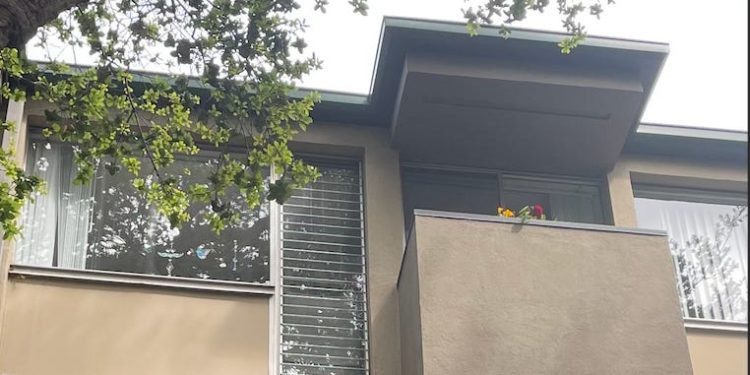Linda Lara has always wanted to become a owner. But being a single mother, taking care of her elderly parents and helping to raise her three granddaughters made it impossible to break enough for a constraint.
Almost six years ago, Lara had the chance to get off the waiting list in the development of housing for the elderly subsidized in San Mateo, California, the city 30 minutes south of San Francisco which she called at home for decades. Despite her rate rent lower than the market, Lara still needs to work 20 hours per week to complete her social security checks and pay her bills. Like many older Americans with whom Bi has spoken, Lara does not think that she can ever retire.
When Lara’s daughter was 12, they moved into an apartment in a room in San Mateo that Lara ended up calling home for almost 30 years. They loved the neighborhood, the “charming” characteristics of the old apartment and, above all, the affordable rent. Lara never wanted to leave.
“There were frank wooden floors, arches, he had an old Wedgewood stove. There were French doors that were going on a patio,” Lara at Bi told Bi. “It was a really sweet little apartment.”
But in 2019, the building was sold. The new owners informed Lara that they were doubled more than her rent, which she could not afford.
Lara was able to move into housing for the elderly subsidized in 2019, after spending several years on the waiting list. With the kind permission of Linda Lara
Fortunately, Lara had entered several lotteries for low -income senior apartments a few years earlier. Just when she was faced with being forced to leave her house, she was informed that she had been selected for a 380 square feet studio in a subsidized building which is addressed to older residents a few pâtés from her house for a long time. She seized the opportunity and quickly moved, relieved to pay less than $ 800 per month in rent.
“It was like a miracle, a gift from the sky that arose right when I needed it,” said Lara.
But the rent increases each year. It is now about $ 1,000 per month. Lara works part -time as an office administrator for the Department of County Parks, which pays her $ 2,170 per month, and she receives $ 1,547 in monthly social security. Her social security payments are inferior to what they would be otherwise because she took the profits early, at 62, when she stopped working full time to help take care of her granddaughters.
Lara fears that if she loses her job or that she is no longer able to work, she will not be able to even afford her subsidized house. With very little savings, retirement is out of the question.
“I will probably work until my death,” she said. “Unless I move somewhere far, it’s much cheaper.”
Do you find it difficult to allow you your accommodation costs, or unable to find suitable accommodation to age? Contact this journalist at erelman@businessinsider.com.
Rare retirement
Lara is far from alone. An American out of five 50 years or more said that they have no retirement savings and that more than half care not to have saved enough to last them until the end of their lives, an AARP survey discovered last year.
The accommodation is a large part of the problem. Many baby boomers have trouble finding affordable and accessible houses to age. Even those who have their house and have seen their Far capital rise in recent years have trouble finding smaller houses to reduce size.
A record number of owners aged 65 and over – about a third of older households – are locked up costs, which means that they spend more than 30% of their income for housing and public services, discovered a Harvard report in 2023. This is particularly difficult for those who have fixed income. As a result, the elderly are increasingly faced with homelessness. Single adults aged 50 or over It is now estimated that half of the population of the American homelessness, against around 10% about three decades ago.
Lara does not want to move away. She has deep roots in her community and daughter, son-in-law and granddaughters live nearby. She said she was not afraid to be expelled from San Mateo or Bay Area when she raised her daughter. But these days, she said, it seems that nothing is affordable.
“Apartments prices are out of control,” she said. “I have to stay in this apartment until I can’t allow myself, and then I don’t know what I will do.”


